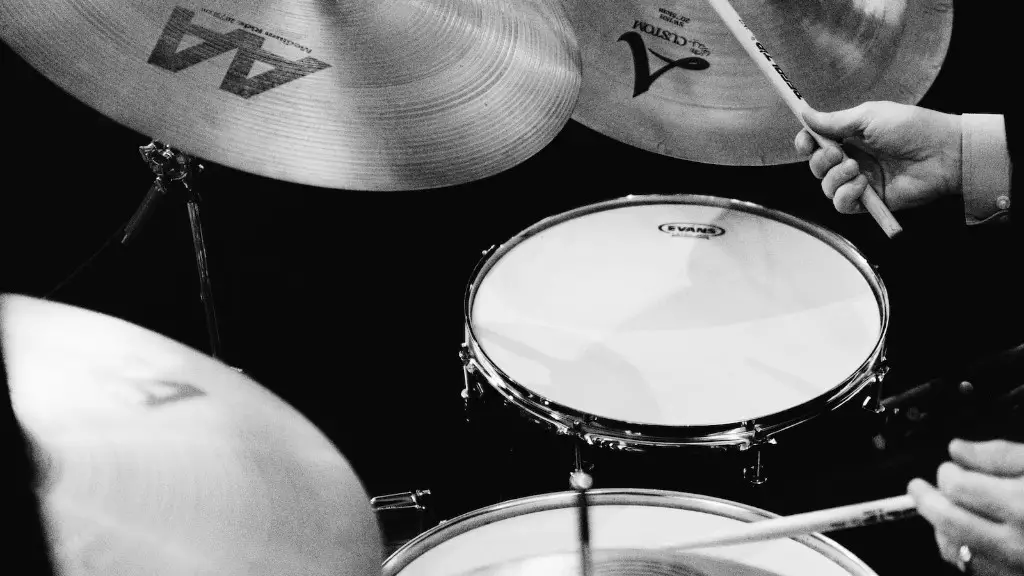Playing odd time signatures on drums can be a daunting task for any musician. However, with the right knowledge and practice, it can be an enjoyable challenge.
The first step is to understand the basics of rhythmic notation and how it applies to odd time signatures. This includes learning how to read and count in different time signatures. Once you have a good understanding of the notation, you can start practicing with a metronome or drum machine to get the feel of playing in odd time signatures.
It’s important to remember that playing in odd time signatures requires a lot of patience and practice. You should also experiment with different rhythms and accents within each pattern to create interesting grooves. Lastly, don’t forget to have fun!
Count & Clap The Groove: How To Play Odd Time Signatures on Drums
Playing odd time signatures on drums can be a challenging task. It requires a great deal of coordination and practice to master the technique. However, with the right approach and tools, almost anyone can learn to play complex rhythms with ease.
The first step is to familiarize yourself with different time signatures and how they are counted. For example, 4/4 is counted 1-2-3-4, while 5/4 is counted 1-2-3-4-5. You need to be able to count accurately in order to keep up with the music. Once you have learned this skill, you can start clapping the groove of each odd time signature. This will help you internalize the rhythm and develop a better feel for it.
Once you are comfortable counting and clapping, it’s time to move onto the drum set. Start by playing simple grooves in various odd time signatures using just your hands or feet. Focus on establishing a steady tempo and keeping accurate time with the metronome or a click track. As you become more comfortable playing in odd times, gradually add more elements such as fills and solos into your playing.
Finally, make sure to practice regularly if you want to become proficient at playing in odd time signatures on drums. Spend some time every day working on your skills so that you can continue to improve your technique and accuracy over time. With enough practice and dedication,
Develop Your Rhythm Vocabulary (How To Play Odd Time Signatures On Drums)
Drummers of all skill levels can benefit from exploring odd time signatures. Doing so can help to build rhythm vocabulary and expand your playing ability. By understanding and mastering the fundamentals of odd time signatures, you can create more dynamic and interesting drum parts.
To start, it’s important to define what an odd time signature is. An odd time signature is any meter that is not a multiple of two or three, such as 5/4, 7/8, or 9/16. These meters are often used in genres like jazz and progressive rock, but they can be applied to any style of music.
The first step in learning how to play in odd time signatures is to practice counting the beats out loud. This will help you get a feel for the flow of the music and will make it easier to keep track of where you are in the bar. Then, try playing simple patterns with your hands or feet. Start with basic eighth-note patterns and then move on to more complex rhythms as your skill level increases. You may also want to use a metronome or drum machine so that you can keep track of your timing while practicing different rhythms.
Once you have mastered basic rhythms in an odd time signature, begin experimenting with adding accents and dynamics to your playing. This will add interest and color to your drum
Playing Odd Time Signatures On Drums
Playing odd time signatures on drums can seem daunting, but it doesn’t have to be. With some practice and patience, you can quickly master the basics of odd time signatures and create interesting grooves and rhythms.
Start with simple beats and practice keeping a steady rhythm. This will help you develop an understanding of how the beats in an odd time signature fit together. As you become more comfortable, try adding variations to your rhythms, such as accenting certain notes or playing them faster or slower.
Once you’ve got the basics down, experiment with different patterns to see what works best for you. Combining two-bar and four-bar patterns can create interesting grooves that sound great. You can also try creating complex fills by playing two or more notes of different lengths at the same time.
Finally, don’t forget to have fun! The possibilities are endless when it comes to exploring odd time signatures on drums. Keep practicing and experimenting and soon enough you’ll be creating unique grooves that will set your music apart from the rest.
Learning Rudiments in Unusual Time Signatures
Learning how to play odd time signatures on drums can be a daunting task, but with practice and dedication you can master them. Rudiments are the foundation of all drumming styles, and understanding them in different time signatures will open up a world of possibilities for your playing.
The first step is to become familiar with the various time signatures. Common odd-time signatures are 5/4, 7/8, and 11/16. To get started, it’s helpful to break each down into its individual parts and practice counting each one out loud. Once you feel comfortable counting in these time signatures, try playing some basic rudiments such as single strokes or paradiddles.
Another important aspect of mastering odd-time signatures is developing your internal clock. This is done by listening closely to the music and feeling the underlying pulse. It’s also helpful to practice with a metronome set to those specific time signatures so you can better understand the rhythms.
Finally, don’t be afraid to experiment! Once you become comfortable with odd-time rudiments, try improvising around them or creating your own patterns. The more creative you get, the more unconventional ideas you’ll come up with that will help take your drumming skills to the next level!
Practice Reading Notation for Odd Time Signature Beats
Playing drums in odd time signatures is an art form that can challenge even the most experienced drummer. To become proficient in odd time signatures, you must first learn to read notation for odd time signatures. Reading notation involves understanding the beats and how they are divided into each bar. For example, a 4/4 beat may be divided into four beats per bar while a 5/4 beat may be divided into five beats per bar. Once you have mastered the basics of reading notation for odd time signatures, you can begin to practice and master more complex rhythms.
Practicing with a metronome can help you to develop a consistent and steady groove when playing in odd time signatures. Start by playing each beat at a slow tempo until it feels comfortable and then gradually increase the speed. After mastering one odd time signature, try experimenting with others such as 6/8 or 7/8. Learning how to play different rhythms in different time signatures will help you become more versatile as a drummer.
Finally, it’s important to remember to listen closely while practicing drumming in odd time signatures. This will help you become more aware of any mistakes or inconsistencies that you make while playing. By listening closely and making adjustments as needed, you will quickly develop the skills necessary to play drums confidently in any type of odd-time signature.
Experiment with Different Fills & Variations
Playing odd time signatures on drums can be tricky, but with a little practice and experimentation, you can make it sound great. Start by using the basic rhythms associated with the time signature you’re trying to play. For example, if you’re playing in 7/4 time, start off by playing a 4-beat phrase followed by a 3-beat phrase. This will help you get used to the timing and also provide an easy way to start creating interesting grooves.
Once you have a solid base rhythm, it’s time to get creative! Experiment with different fills and variations to create unique and exciting grooves that will keep listeners engaged. Try playing around with different accents or ghost notes to add interest to your beat. You could also incorporate different cymbal patterns or even incorporate some improvisation into your drum parts.
Finally, don’t be afraid to experiment! Take some chances and try out new ideas that may not seem obvious at first. Taking risks can often lead to great results, so don’t be afraid to push yourself out of your comfort zone. With practice and experimentation, you’ll soon master odd time signatures on drums!
To Sum It All Up
Playing odd time signatures on drums is a challenging yet rewarding experience. It requires a great deal of practice and dedication to master, but the results can be truly amazing. Understanding the concept of odd time signatures and how to count them is essential for any drummer who wants to explore this style of playing. Once you have a grasp on the basics, you can start experimenting with different rhythms and patterns. With enough practice, you’ll be able to create unique and interesting rhythms that will add an extra dimension to your drumming. Odd time signatures can be a great way to push yourself as a drummer.
The best way to learn how to play odd time signatures on drums is by practicing with a metronome or backing track. This will help you stay in time and become comfortable with the feel of each rhythm. You can also try using different drum sounds or playing along with other musicians who are familiar with odd time signatures. With enough practice, you’ll soon be able to develop your own unique style of playing in odd time signatures.
The bottom line is that learning how to play odd time signatures on drums can be difficult, but it’s worth the effort if you want to explore new rhythmic possibilities. With dedication and practice, anyone can learn how to play this style of music effectively.





